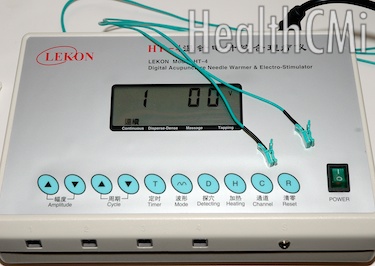Acupuncture successfully reverses erectile dysfunction. In a case study of a patient that was unresponsive to the medication sildenafil (Viagra, Revatio), a combination of manual acupuncture and electroacupuncture were successful in improving the quality of sexual intercourse. Acupuncture significantly improved the ability to maintain an erection during sexual intercourse. Erection hardness and sustainability improved and subjective reporting documents improvements in sexual satisfaction. 
Acupuncture demonstrated five major and significant improvements in erection quality. Confidence in the erection improved. Hardness of the erection improved. Maintenance of the erection during sex improved, maintenance of the erection to completion of sexual intercourse improved and overall satisfaction with the quality of sex improved.
PDE-5 inhibitors (e.g., sildenafil, Viagra; tadalafil, Cialis; vardenafil, Levitra) are the drugs of choice for erectile dysfunction (ED). PDE-5 inhibitors function by relaxing smooth muscle thereby allowing the penis to fill with blood. In this case study, the patient had initial success in treating ED with sildenafil. However, the beneficial effects of the medication diminished over time until the patient was no longer able to maintain an erection although he was taking the medication. PDE-5 inhibitors work in approximately 7 of 10 men but may lose their effectiveness if taken over a long period of time. Side effects of PDE-5 inhibitors include hives, hearing and vision loss, tachycardia, bradycardia, acid reflux, heartburn, diarrhea, headaches, musculoskeletal pain and rhinitis.
The patient was 61 years of age and suffered from type II diabetes and ED. Sildenafil was initially successful in controlling ED, however, its therapeutic effects waned over time even though the dosage of the medication was increased from 25 mg to 50 mg. Diabetes is a major risk factor for ED along with age, cardiovascular disorders, smoking and depression. Research indicates that success rates for the treatment of ED with PDE-5 inhibitors is less than 50% for patients with diabetes.
Acupuncture Intervention
Acupuncture was applied in three separate protocols each week:
- Manual acupuncture was applied to acupuncture point UB33 (BL-33, Zhongliao).
- Manual acupuncture was applied to the pudendal nerve point (PN).
- Electroacupuncture was applied to PN.
Each protocol was applied once a week for five weeks. Immediately after the very first acupuncture treatment, the patient’s morning erection improved significantly. After four acupuncture treatments, the patient was able to resume sexual activity.
Manual stimulation of BL-33 was applied with a sterile, disposable filiform acupuncture needle (0.3 mm X 60 mm) bilaterally. Depth of insertion ranged from 50 mm to 60 mm and manual twirling techniques were applied. BL-33 is located in the third posterior sacral foramen. In Traditional Chinese Medicine (TCM), this point is used to strengthen the lower back and legs. It is also traditionally indicated for regulating the lower burner (lower jiao) and for the treatment of lower back pain, leukorrhea and irregular menstruation. 
The PN acupuncture point is located approximately 50 - 60% of the difference along a line from the posterior iliac spine to the lower inner edge of the ischial tuberosity. Bilateral insertion of acupuncture was applied with a 0.3 mm X 90 mm sterile, disposable filiform needle. For manual acupuncture, twirling techniques were applied for 15 minutes. For electroacupuncture, 10 Hz stimulation was applied for 15 minutes. Intensity was set to the level at which the patient felt sensations in the pudendal area.
This acupuncture continuing education study features a detailed single case study clinical investigation. Other research conducted on larger sample sizes documents the success of acupuncture for the treatment of pathophysiological responses to diabetes mellitus. ED is one clinical pathology associated with diabetes. The key moving forward is for a larger clinical trial to specifically focus on acupuncture for the treatment of ED both in diabetics and patients without diabetes. In this way, the parameters of the success for acupuncture in the treatment of ED may be quantified.
Reference:
TANIGUCHI, Hiroshi, Kenji IMAI, Sazu TANIGUCHI, and Hiroshi KITAKOJI. "Acupuncture in the Treatment of Erectile Dysfunction among a Diabetic Population of Sildenafil Citrate Non-Respnder."


